Indoor plants are more than decorative elements—they improve air quality, reduce stress, and bring life to living spaces. However, one of the most common challenges for beginners is understanding how to water indoor plants properly. Overwatering, underwatering, and inconsistent watering practices are among the leading causes of plant stress and death.
This comprehensive guide provides a step-by-step approach to watering indoor plants correctly, including understanding plant water needs, choosing the right techniques, selecting containers and soil, monitoring plant health, and avoiding common watering mistakes.
Why Proper Watering Matters
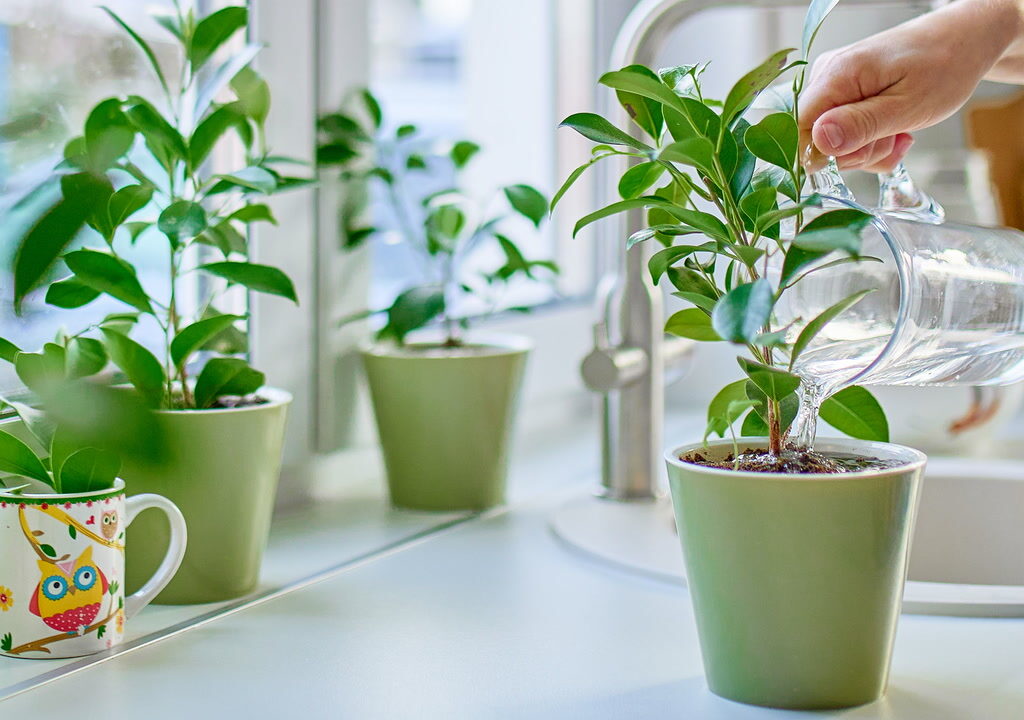
Water is essential for plant survival, playing key roles in photosynthesis, nutrient absorption, and temperature regulation. Incorrect watering can lead to several issues:
- Overwatering: Causes root rot, yellowing leaves, and fungal growth.
- Underwatering: Leads to wilting, dry leaves, stunted growth, and leaf drop.
- Inconsistent Watering: Stresses plants and can reduce flowering or foliage quality.
Proper watering ensures healthy growth, vibrant leaves, and thriving plants.
Understanding Plant Water Requirements
Different plants have varying water needs based on their species, size, and environment:
- Succulents and Cacti: Low water requirement; store water in leaves and stems.
- Ferns and Tropical Plants: High water requirement; prefer consistently moist soil.
- Herbs (e.g., basil, mint): Moderate water requirement; soil should be moist but not soggy.
- Flowering Plants (e.g., orchids, peace lilies): Watering depends on flowering cycle and potting medium.
Tip: Always research the specific water needs of your plant species to avoid common mistakes.
Choosing the Right Containers and Soil

Proper containers and soil are crucial for effective watering:
Containers:
- Drainage Holes: Ensure containers have adequate holes to prevent waterlogging.
- Size: Small pots dry out faster, while large pots retain moisture longer.
- Material:
- Terracotta: Porous, allows excess moisture to evaporate; ideal for succulents.
- Plastic: Retains moisture longer; suitable for tropical plants.
- Ceramic/Glazed Pots: Attractive but retain water; adjust watering frequency accordingly.
Soil:
- Use well-draining potting mix suitable for your plant type.
- Mix sand, perlite, or vermiculite into soil to improve drainage.
- Avoid heavy garden soil, which can retain excess water and suffocate roots.
Watering Techniques
Proper watering is about technique as much as quantity:
Step 1: Check Soil Moisture
- Insert your finger 1–2 inches into the soil.
- Dry Soil: Time to water.
- Moist Soil: Hold off watering.
- Use a moisture meter for precision if needed.
Step 2: Watering Method
- Top Watering: Pour water evenly over the soil surface until water drains from the bottom.
- Bottom Watering: Place the pot in a shallow container of water and allow roots to absorb moisture for 15–30 minutes; ideal for plants sensitive to wet foliage.
- Misting: Useful for tropical plants to increase humidity but does not replace root watering.
Step 3: Water Quantity
- Water enough to moisten the root zone without oversaturating.
- Allow excess water to drain freely from containers; never let pots sit in standing water for extended periods.
Frequency of Watering
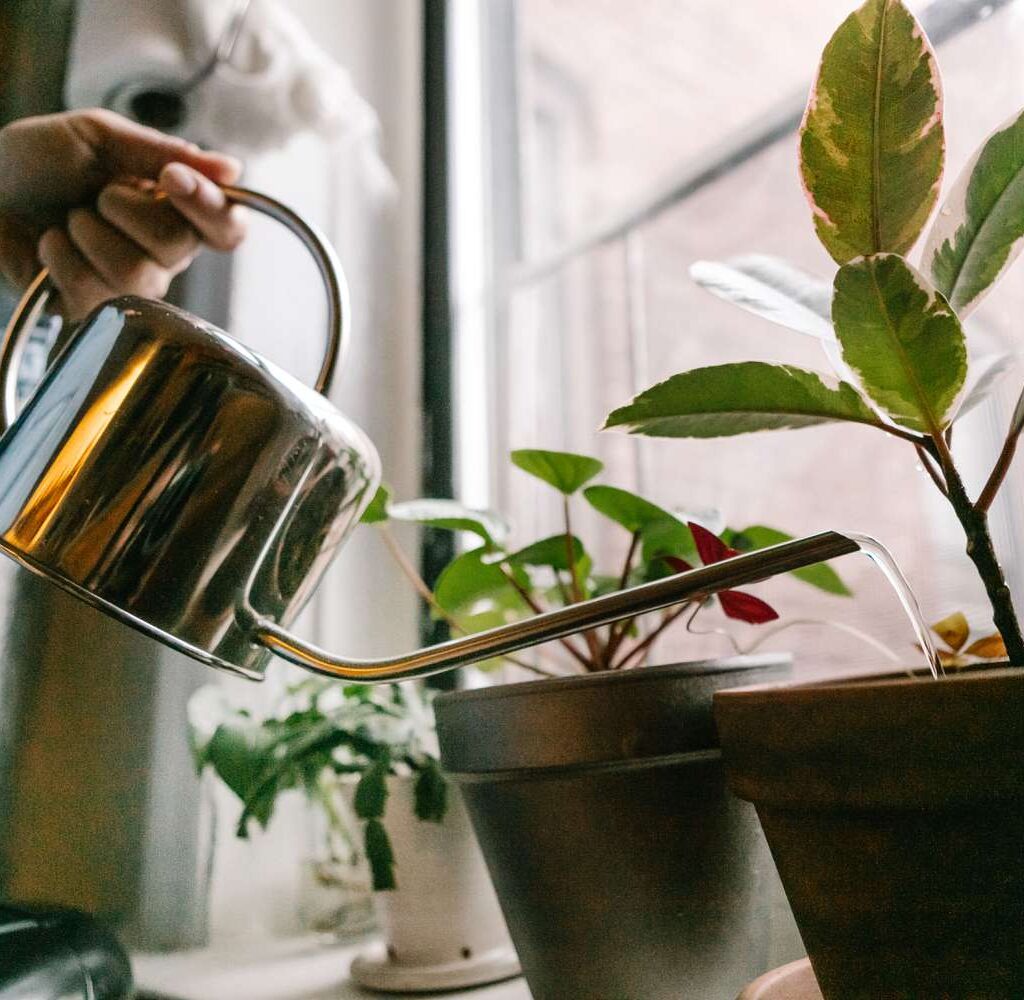
Watering frequency depends on plant type, container size, indoor climate, and season:
- Succulents/Cacti: Every 2–4 weeks, allowing soil to dry completely.
- Tropical Plants: Every 5–7 days or when top 1–2 inches of soil feel dry.
- Herbs: Every 2–3 days in small pots; soil should remain slightly moist.
- Flowering Plants: Adjust based on flowering stage; more frequent watering during bloom.
Seasonal Adjustment:
- Summer: Increase watering frequency due to higher evaporation and growth rates.
- Winter: Reduce watering; slower growth reduces water needs.
Water Quality Considerations
The type of water used can affect plant health:
- Tap Water: Usually fine, but some plants are sensitive to chlorine or fluoride.
- Filtered Water: Reduces chemical residues and salts; better for sensitive species.
- Rainwater: Ideal for most indoor plants; naturally soft and nutrient-rich.
- Temperature: Use room-temperature water to prevent shock to roots.
Signs of Improper Watering

Recognizing plant stress helps correct watering mistakes:
Overwatering Signs:
- Yellowing or wilting leaves despite wet soil
- Moldy soil surface
- Foul odor from soil
- Root rot (brown, mushy roots)
Underwatering Signs:
- Drooping or curled leaves
- Dry, brittle leaf edges
- Slow growth and leaf drop
Action: Adjust watering frequency, improve drainage, or repot if necessary.
Advanced Watering Tips for Beginners
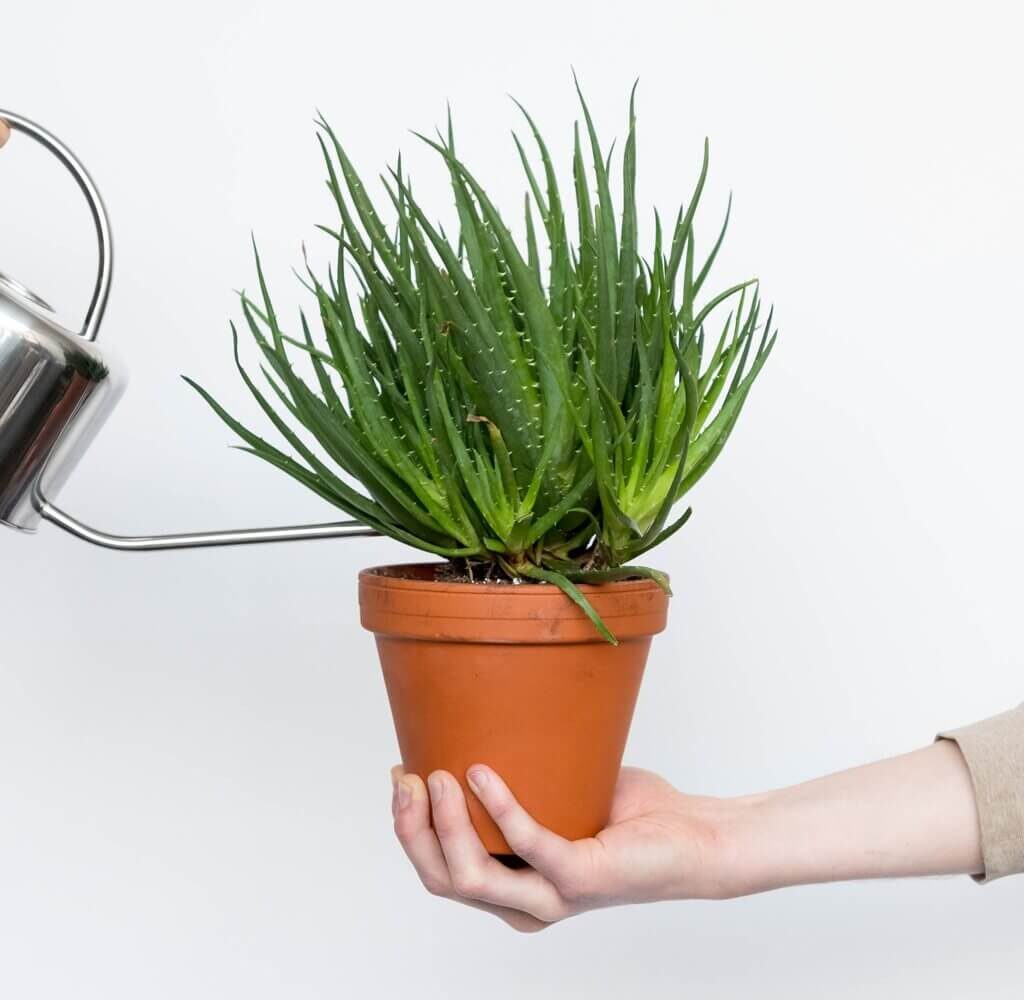
- Consistent Schedule: Water plants in the morning to allow leaves to dry during the day.
- Pot Placement: Keep plants away from radiators or air conditioners that dry soil quickly.
- Mulching: Use pebbles or moss on soil surface to retain moisture for tropical plants.
- Self-Watering Pots: Ideal for beginners; maintain consistent moisture and reduce watering errors.
- Group Plants by Water Needs: Helps maintain an efficient watering schedule and reduces mistakes.
Common Watering Mistakes to Avoid
- Overwatering Compact Soil: Heavy soil retains water, increasing the risk of root rot.
- Ignoring Seasonal Changes: Plants require less water in winter and more in summer.
- Watering Leaves Instead of Roots: Can lead to fungal growth; always water the soil directly.
- Using Cold Water: Shock from cold water can stress plants; use room temperature water.
- Neglecting Drainage: Containers without drainage lead to waterlogging and root disease.
Monitoring and Adjusting Watering Practices
- Observe Plants Regularly: Leaf color, turgor, and growth indicate watering adequacy.
- Use Soil Moisture Tools: Moisture meters help determine when soil is dry or adequately moist.
- Record Watering Schedule: Tracking watering habits helps maintain consistency and identify trends.
- Adjust Based on Environment: Indoor humidity, temperature, and plant growth stage affect water needs.
Benefits of Correct Watering Practices
Proper watering enhances plant health and indoor environment:
- Vibrant Foliage: Prevents yellowing, wilting, or leaf drop.
- Enhanced Growth: Supports photosynthesis, nutrient absorption, and root development.
- Long-Term Health: Reduces stress and susceptibility to pests and diseases.
- Aesthetic Appeal: Healthy, lush plants improve home ambiance and air quality.
- Time and Resource Efficiency: Proper watering prevents overuse of water and minimizes plant loss.
Conclusion
Watering indoor plants correctly is a fundamental skill for beginner and experienced gardeners alike. Understanding the unique water requirements of different plant species, using the right containers and soil, applying proper techniques, and monitoring plant health are key components of successful indoor gardening.
By following this beginner’s guide, anyone can maintain healthy, thriving indoor plants, enjoy their aesthetic and environmental benefits, and cultivate a nurturing and rewarding indoor garden. Consistent care, attention to signs of stress, and adjustment to environmental conditions ensure that indoor plants grow strong, vibrant, and full of life, creating a harmonious living space year-round.
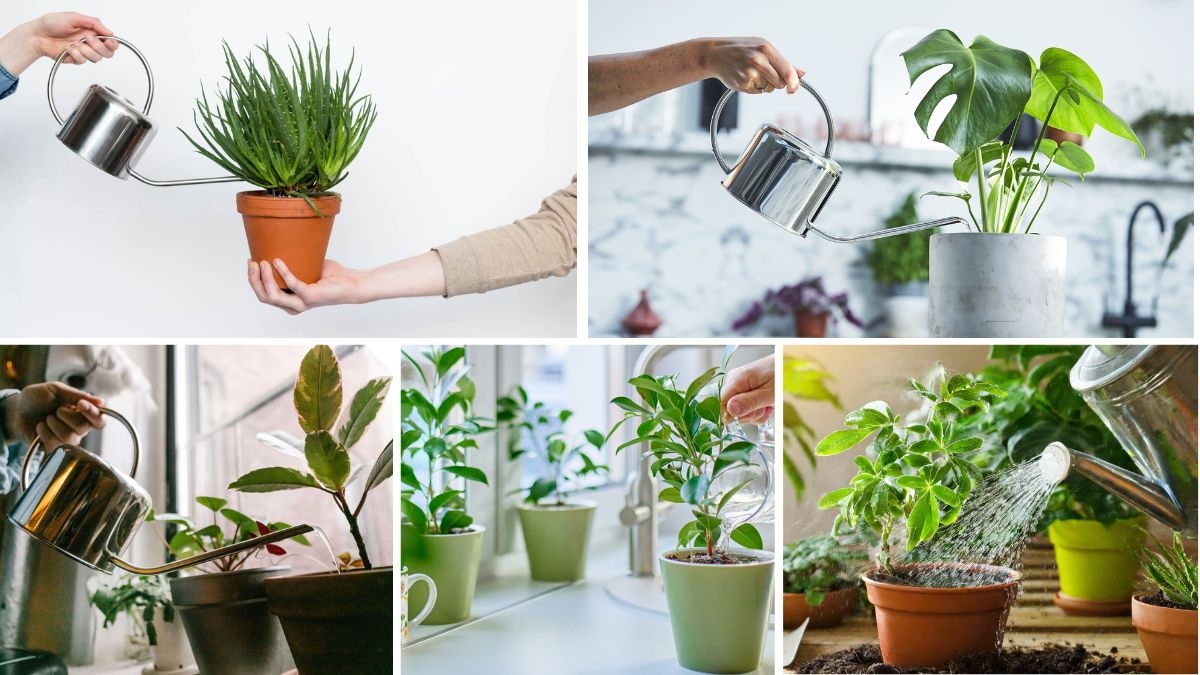

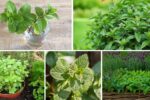

Leave A Comment